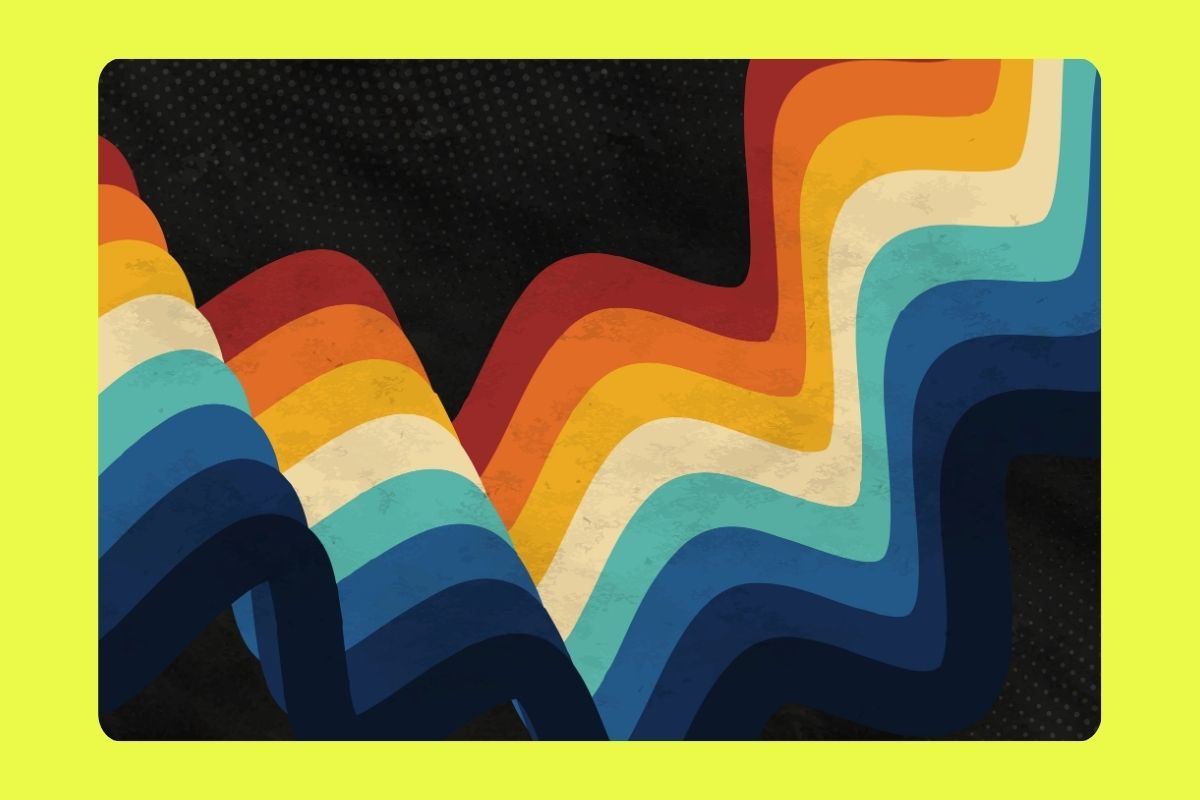TL;DR
The 1970s brought a transformative wave to graphic design, marked by bold typography, vivid colors, and punk influences. Embracing photography and famous endorsements, the era’s design left a lasting impact. Today, its iconic styles and experimental postmodernism continue to inspire modern creatives seeking a retro flair.
Graphic design has evolved over the years, often influenced by societal and cultural changes.
It can take inspiration from music, art, fashion and culture. Graphic design in the 70s provided plenty of inspiration over the years. There’s been a recent revival thanks to many consumers enjoying retro designs.
There was a lot happening in the 70s, from diverse pop culture to social movements, all of which influenced graphic design in different ways. From punk to postmodernism, there are many things about 1970s graphic design to inspire you today.
Photography and Collages
Graphic design in the 1950s and 1960s often featured cartoons and illustrations.
In the 1970s, this changed, and photography became more popular. The 1970s took things the extreme, which meant that photography was often dazzling or in grayscale.
Adding collage elements to photography was popular too, and eye-catching typography was used to enhance photos, particularly in popular magazines such as Rolling Stone. Illustration didn’t disappear, but it was used more to support photography instead of standing on its own.
Use of Famous Faces
Connected to the use of photography in 1970s design was the use of famous faces to promote products. As real people were models in advertisements more, it made sense to have well-known names and faces as the face of a brand.
A 1977 Craig Stereo advertisement featured Ray Charles promoting a stereo, emphasizing his name and face while downplaying other elements of the graphic design. This use of famous faces is something that has continued today in magazines, on TV or on social media.
Developments in Typography
Another prominent area of development in 1970s graphic design was typography. Typesetting technology during the decade made it possible to create revolutionary typography.
Typography was often combined with photography to create striking graphics. Everything was bold and bright, with elements such as 3D styles and large lettering.
It might be too much for today’s tastes, but it can still provide a lot of inspiration for graphic designers looking for a retro touch.

Punk Graphic Design and Musical Influence
There was plenty of musical influence on graphic design in the 1970s. The different movements in the music scene, such as punk, inspired graphic designers the most.
Like the music, there wasn’t anything refined about punk graphic design. It was often black and white, homemade and with a DIY feel, even if it was made for professional materials, such as album artwork.
Some of the most famous album covers come from the 1970s, from Sex Pistols and The Ramones to the Rolling Stones and David Bowie. Like many other graphic materials, they often featured photography.
Use of Color
Previous decades had been colorful with design too, but the 1970s took colorful design to new heights. Bright colors stood out even more against black and white photography using vivid shades.
In the 1960s, the psychedelic style that went along with the hippy movement grew. That continued into the 1970s, tied into the other stylistic choices that designers of that time were making.
Even though the colors were bright, they were chosen to go well together, although some color choices pushed the barriers.
The Beginning of Postmodernism
Postmodernist design began to emerge in the 1970s, with designers embracing historical styles that had been rejected. Older styles were adopted and designers experimented with them, making them more exaggerated and fun.
From neo-classicism to art deco, these older design styles provided inspiration for 1970s designers, and can still inspire designers in the modern age. The 1970s was a great decade for testing styles and rejecting academic definitions previously found in graphic design.
The 1970s was only the beginning of postmodernism. Much more would come.
Influences from Around the World
Various cultural and design influences from around the world were important in graphic design in the 1970s. As the world became more global, different cultures influenced each other.
For example, Japan’s recovery from the Second World War and its growth meant that it had a strong influence on the rest of the world.
How Japanese design influenced design elsewhere included a new set of colors that go well together, centered icons and symmetry.
Stand-out Graphic Design from the Decade
There are many recognizable examples of graphic design that can provide inspiration for graphic designers today. One particular example is the NASA logo and the striped IBM logo, which replaced the solid version in 1972.
Other notable designs from the decade include the rainbow-striped beaver for the 1976 Vancouver Olympics and adverts from Apple, such as the Introducing Apple II advertisement from 1977.
Graphic designers today who want to take inspiration from the 1970s can find plenty of ideas. Whether you fancy posters, album artwork or advertisements in magazines, the 1970s offers fun, retro inspiration to get your creative juices flowing.
Look at the artwork from the decade, whether its famous pieces that everyone recognizes or obscure designs that only graphic design nerds are interested in.
The ’70s was a great time for change and development in graphic design that led to more interesting design movements toward the end of the decade.
You can rediscover ideas from graphic design in the 70s to influence your own designs to create something memorable in 2019.
